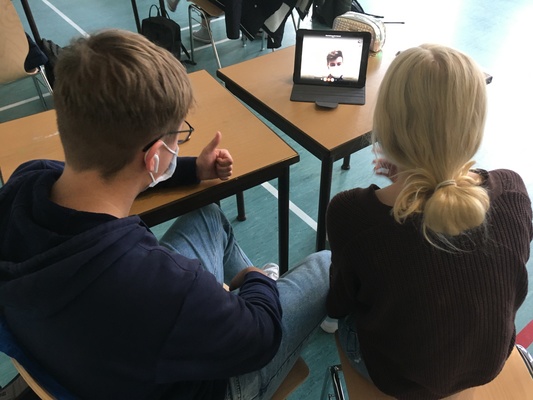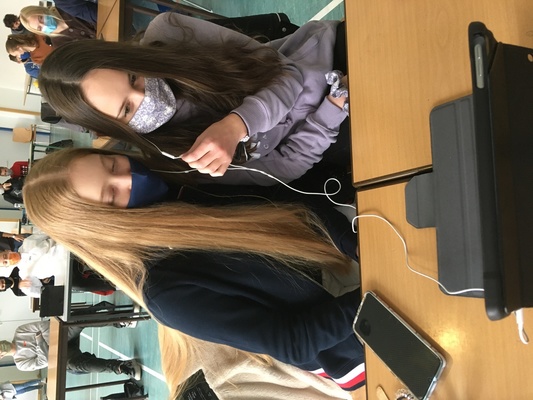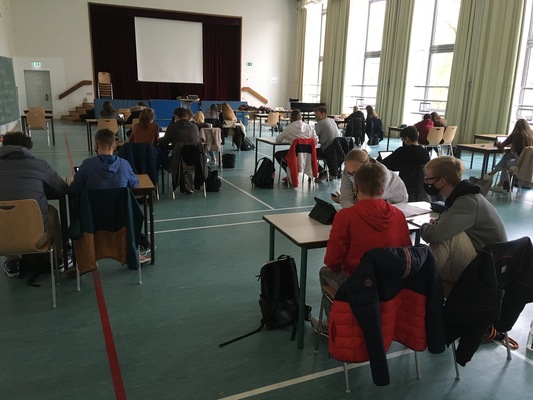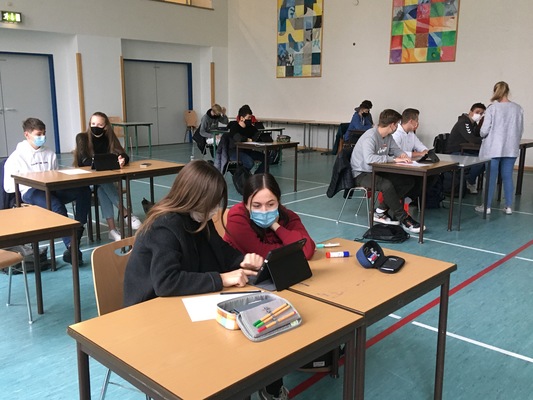 Erasmus goes digital
Erasmus goes digital
After a long break due to corona, we are finally resuming work on the Erasmus project. Due to the external circumstances, the project can unfortunately no longer be organised across grades, but will now be continued in a single grade 10 class, the 10e. Some of the pupils were already participants in the AG or had already come into contact with the project during their Spanish lessons, but for the majority of the pupils the subject of the Way of St. James was more or less completely new territory. To get into the right mood, we first watched the film "The Way - Your Way". This is a quiet film about the American ophthalmologist Tom Avery, who, after his adult son Daniel died in a storm on the Way of St. James in France, travels to France and decides to take the Way in honour of his son. On the way, he wants to scatter his son's ashes. At first alone, Tom meets other pilgrims on the way, all of whom are looking for more meaning in their lives. The film provided a good introduction, as it casually introduces the traditions of the Way of St. James, for example the meaning of the stamps on the pilgrim's pass or the scallop. It gave rise to many discussions: How do the pilgrims in the film change on their way? What different motives do they have? What do they find at the end of the path? And why do people still go on pilgrimages today? In the end - would such a pilgrimage be something for me too?
After this introduction to the topic, it was easier for us to immerse ourselves in the stories of the Spanish partners around the Way of St. James, which began many months ago. Our task was to continue writing these fragments of history in English. With smoking heads we put ourselves in the role of pilgrims on the Camino de Levante, the section of the Camino de Santiago that leads through Valencia, the home town of our partner school. The stories will now be sent back to Spain. Binational teams will soon be formed to continue working on the stories - digitally and with the help of the video conferencing platform Jitsii.
Afterwards, we tried out whether such a digital collaboration would work at all. We held a video conference with our Spanish partners for about one hour. Since the Spanish are taught in divided classes, one Spanish pupil was assigned to a German pupil, and one Spanish pupil to a German pupil. We used the conference platform Jitsii, as this had been successfully introduced at the HGT in the course of the homeschooling in spring. In this first video session, the aim was to get to know each other, since most of the pupils on both the Spanish and German sides were newcomers to the project. But as I said, we tried it. Because technical problems made it difficult for us to start the digital partnership. Thanks to the active support of Mr. Sikorski and Mr. Schumacher, however, we were all able to exchange at least a few words with the Spaniards in the end. For the following week, a second video link was arranged directly with the second half of the Spanish pupils' class. With the newly gained experience this will certainly work out better now.
(Class 10e)


